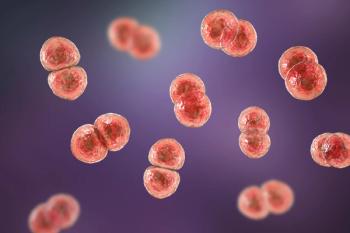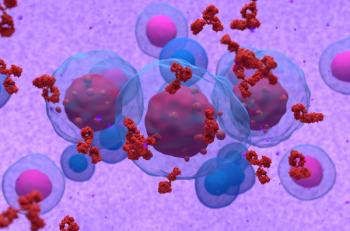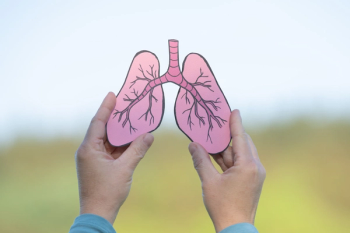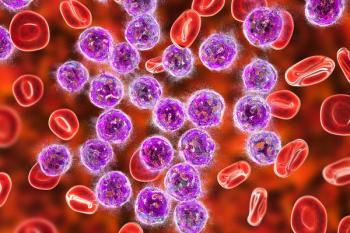
- January 2023
- Volume 89
- Issue 1
Pharmacists Are Moderately Satisfied With Compensation, Slightly Less With Overall Job, Survey Shows (Part 1)
Workload, work-life balance, and management continue to be the top 3 drivers of job dissatisfaction.
Results from the Pharmacy Times 202 Salary and Job Satisfaction Survey showed that pharmacists are moderately satisfied with their compensation but slightly less satisfied with their overall jobs.
The 2022 survey garnered 150 responses, and 92.6% of participants said they had been pharmacists for 1 year or longer. Additionally, 89.2% said that they are employed in the United States. A little less than half (47.7%) said they work in a community pharmacy chain, 24.8% said they work in a health system, 10.1% work in an independent community pharmacy, 14.8% answered “other,” and 2.6% said they are not employed.
When asked to rate their satisfaction with their annual total compensation on a scale of 1 to 7 (with 1 being “not at all” satisfied and 7 being “extremely” satisfied), the average response from 149 respondents was 4.15. This is slightly lower than pharmacists’ satisfaction with their total compensation in their first year after graduation. The average response when asked to rate their satisfaction with compensation during their first year after pharmacy school was 4.22 out of 7.
“Many pharmacists are frustrated that they have not received raises for several years, and I have seen pharmacist job postings with very low hourly rates,” Amy Mgonja, PharmD, BCGP, a clinical pharmacist at St Luke’s Health System in Boise, Idaho, wrote in an email to Pharmacy Times®. “These stagnant wages have continued despite the increased workload created by the pandemic.”
Overall job satisfaction was slightly lower, with the average response being 3.76 on a scale of 1 to 7. Respondents were also asked about their top drivers of satisfaction. The top 3 drivers were pride in the profession (16.3%), compensation (16.3%), and autonomy (12%).
“Internal sources of motivation are stronger than any external source,” Mgonja wrote. “As a pharmacist, I’m motivated when my efforts lead to benefits such as keeping patients safe, making a coworker’s job easier, or reducing costs. My proudest moments are when I can intervene in a patient’s care to prevent a serious error.”
On the other hand, respondents’ top 3 drivers of dissatisfaction in their jobs were workload (35.3%), work-life balance (24.7%), and management (11.8%). These were the same top 3 drivers of dissatisfaction that respondents reported in the 2021 Pharmacy Times® Salary and Job Satisfaction Survey.1
The concerns about workload and work-life balance were reflected in separate questions, one of which asked respondents to rate their stress levels regarding workload on a scale of 1 to 7. The average response to this question was 5.15. The second question asked pharmacists whether they agree, disagree, or are neutral to the statement, “My job gives me the flexibility to meet the needs of both my work and personal lives.” According to the survey results, 38.9% agreed, 45% disagreed, and 16.1% were neutral.
“The nature of the pharmacy profession doesn’t allow flexibility for the majority of pharmacists, creating difficulty for work-life integration,” Mgonja wrote. “Pharmacists tend to work long hours in both retail and hospital settings, often without another pharmacist. The lack of flexibility has been exacerbated by the pandemic for a few reasons: increased workload, understaffing, and sick coworkers.”
Interestingly, respondents were just moderately motivated by the potential for advancement within their organizations. When asked to rate this motivation on a scale of 1 to 7 (with 1 being “not at all” and 7 being “extremely”), the average answer was 3.11. When asked to rate how likely they would be to work in a pharmacy career again if given the chance to start over, the average answer was 3.65. Similarly, the average ranking was 3.8 when asked to rate how likely they would be to select the same practice setting again and 5.15 when asked how likely they would be to work in the same state again if given the chance to start over.
Of the 150 respondents, 67.1% self-identified as White, 6.7% as Asian, 6% as Asian Indian, 4% as Middle Eastern or North African, 2.6% as Hispanic or Latinx, 2.01% as African American or Black, and 9.4% preferred not to answer.
“Pharmacists do their heroic work in the background without a lot of recognition,” Mgonja wrote. “The progress made in the pharmacy profession through the pandemic has helped educate the public about the benefit of pharmacists, and I believe that the perception is slowly changing.
“As the public starts to demand a higher level of care that includes pharmacist input, pharmacists will realize an increase in job satisfaction related to appreciation received for the pride they take in their work.”
REFERENCE
Gallagher A. 2021: Pharmacists are moderately satisfied with salary, job satisfaction, survey results show (part 1). Pharmacy Times®. January 11, 2022. Accessed December 19, 2022.
Articles in this issue
almost 3 years ago
Pet Peeves- January 2023almost 3 years ago
Vivjoa From Mycovia Pharmaceuticals, Incalmost 3 years ago
Case Studies- January 2023almost 3 years ago
Consider 2 Safety Issues When Treating, Vaccinating for Monkeypoxalmost 3 years ago
January OTC Case Studies- Diabetesalmost 3 years ago
FDA Allows Access to Lifesaving Investigational Drugsalmost 3 years ago
Generic Product News for January 2023almost 3 years ago
PREP Act Provides Opportunities for Advanced Rolesalmost 3 years ago
What Is the Point of Point-of-Care Testing?almost 3 years ago
January 2023 Rx Product NewsNewsletter
Stay informed on drug updates, treatment guidelines, and pharmacy practice trends—subscribe to Pharmacy Times for weekly clinical insights.
















































































































































































































